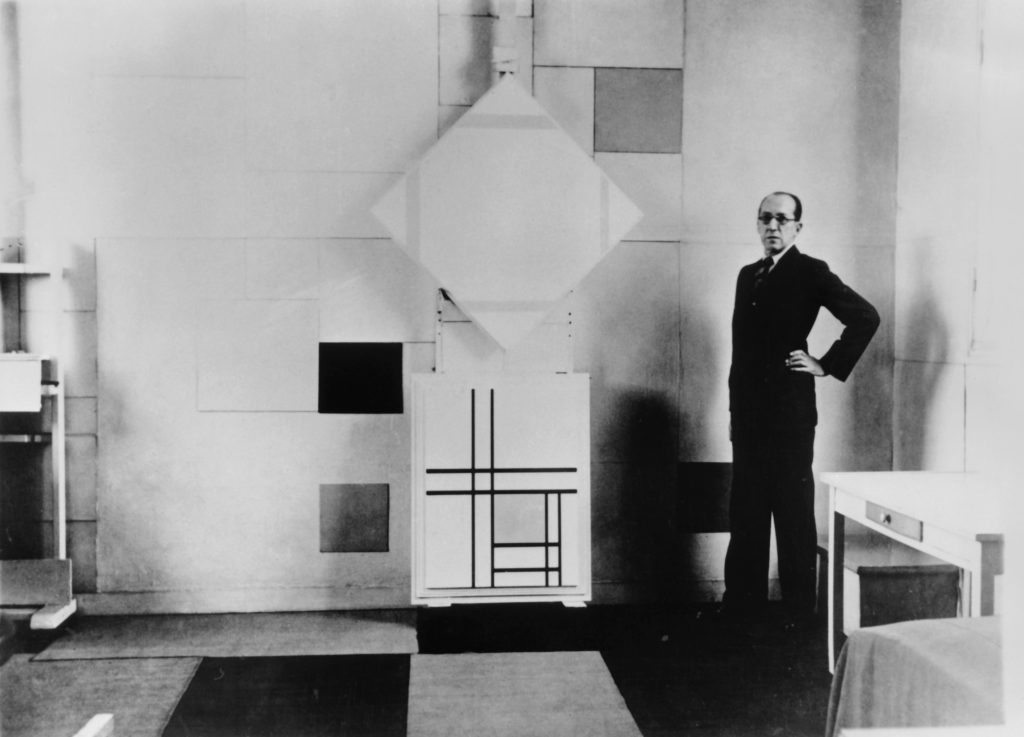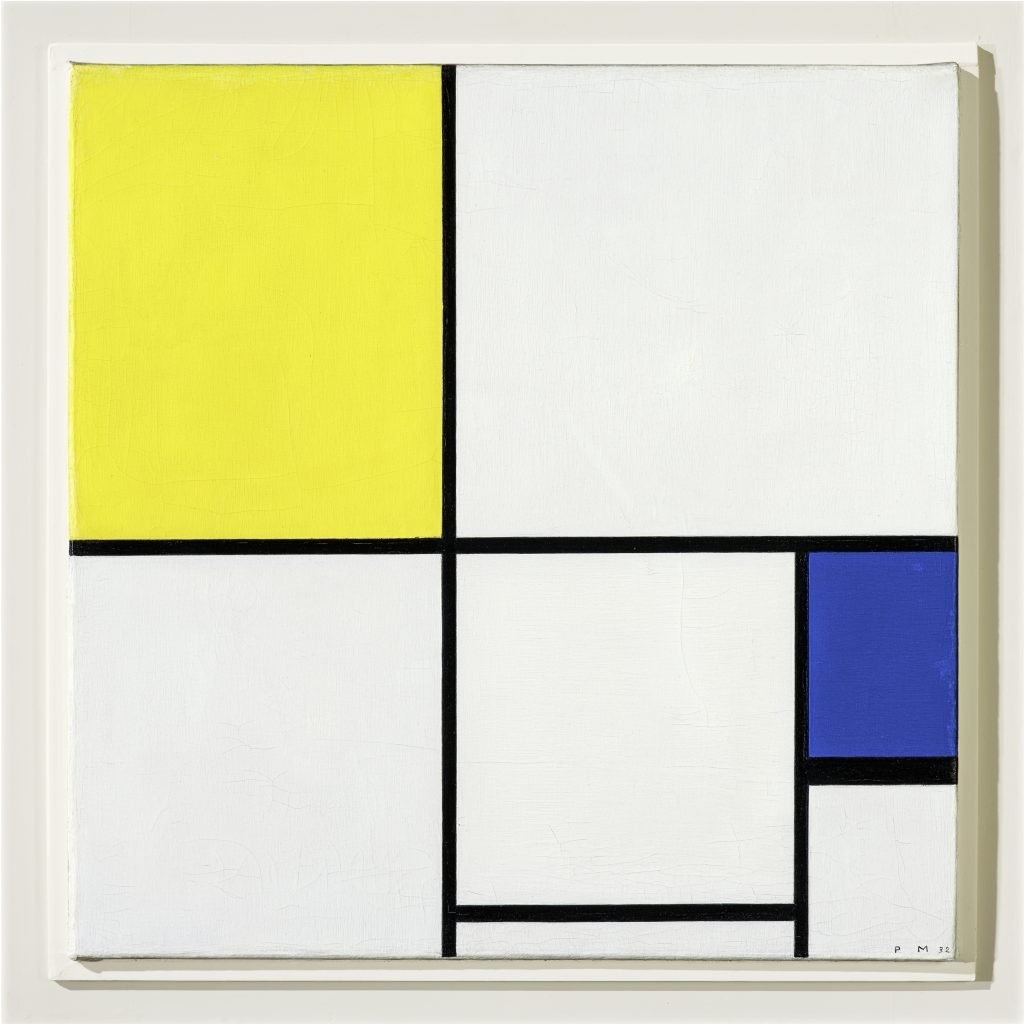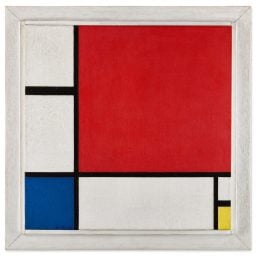One hundred and fifty years after his birth, Dutch artist Piet Mondrian’s work still feels as radical as ever. That’s the thesis of a new exhibition, “Mondrian Evolution,” at the Fondation Beyeler in Basel, Switzerland (through October 9, 2022).
Coinciding with Art Basel, the show is bound to attract the attention of some of the art market’s most influential tastemakers. But is Mondrian’s market impact as significant as his art-historical one? We dug into the Artnet Price Database to find out.
The Context
Auction record: $50.6 million, achieved at Christie’s New York in May 2015
Mondrian’s Performance in 2021
Lots sold: 7
Bought in: 1
Sell-through rate: 87.5 percent
Average sale price: $3.8 million
Mean estimate: $63,217
Total sales: $26.7 million
Top painting price: $26.1 million
Lowest painting price: $63,616
Lowest overall price: $5,301, for a portfolio of 20 silkscreens in an edition of 150.

© 2022 Artnet Worldwide Corporation.
The Appraisal
- Supply Is King. There’s a reason the chart of Mondrian’s auction sales looks like the back of a Stegosaurus: It’s because the artist’s market is characterized by a lack of supply. Many examples from his most coveted and characteristic Neoplastic period, which he began in the 1920s, are safely tucked away in museums. Since 1999, no more than 15 works by Mondrian have ever hit the auction block in a single year. So, on the rare occasion that one or two Classical Period works do come to market within a short period—like in 2004, 2009, 2015, and 2021—they generate big prices that have an outsize impact on total sales.
- Top of the Market. Mondrian’s market peaked in 2009, when the artist saw $65 million in total sales. That year, the legendary sale of Yves Saint Laurent and Pierre Bergé’s collection included five Mondrians, all of which exceeded expectations. The group was led by Composition avec bleu, rouge, jaune et noir (1922), which sold for $27.6 million, around double its high estimate, to the Louvre Abu Dhabi. The fact that the art market was still recovering from the recession during Mondrian’s biggest year is further evidence that supply, not demand, is the most powerful factor at play.
- Grid Power. Mondrian’s primary-colored canvases, which secured his place in art-history books, are also unsurprisingly the most desired by the market. These account for his top six auction prices, which are all above $20 million. In second place are the earlier, looser grid compositions made between 1913 and 1919, as the artist was digesting Cubist influences and working his way toward sparser, sharper pictures. Somewhat desirable, but considerably less valuable, are Mondrian’s Pointillist paintings from 1908 to 1910, as well as his earlier landscapes, florals, windmills, and still lifes.
- Condition Is Key. One of the important limiting factors of the Mondrian market is condition. Buyers, according to experts, like to see the artist’s brushstrokes and the variety of textures he deployed. (Contrary to popular belief, Mondrian’s paintings are neither flat nor Minimalist. Instead, they are heavily layered and always reveal the artist’s hand.) Collectors also want to see the artist’s original mounts, which he made for many of his paintings. But some of these mounts were discarded over the years and works from his most desirable periods can suffer from surface cracks and heavy-handed conservation attempts.
- Under the Radar. Because key Mondrian works are so hard to come by, the artist makes only a small ripple on the Artnet Price Database search results, drawing just 1,257 paid inquiries last year. For comparison, that is considerably less than a peer like Jean Arp (2,921), or even one like Max Beckmann (1,345). It’s also fewer than extreme non-peers like Mr. Brainwash (1,300) and Mr. Doodle (1,581).

Charles Karsten’s photograph of Piet Mondrian in his studio with (top) Lozenge Composition with Four Yellow Lines (1933) and (bottom) Composition with Double Lines and Yellow (1934), Paris, October 1933. Collection RKD – Netherlands Institute for Art History
Bottom Line
If the right work by Mondrian—a lozenge-shaped striped canvas from the 1920s, say, or one of his syncopated late “Boogie Woogie” paintings—were to hit the market (publicly or privately), the sky is probably the limit in terms of price. At the end of last year, Mondrian’s heirs sued the Philadelphia Museum of Art, seeking to reclaim Composition With Blue, one of the 17 lozenge-shaped works the artist created in Paris, which they claim is worth $100 million.
The current Beyeler show focuses on the first part of the artist’s career and aims to collapse some of the strict distinctions between his different bodies of work. The curators argue that Mondrian’s relationship to figuration and abstraction was more fluid than it might seem at first glance, with water reflections, plants, and other natural elements providing a through-line.
The status of and market value for Mondrian’s classic works is uncontested. But the renewed emphasis on his earlier material—clear in both the Beyeler show and a major exhibition at the Hague in 2017—suggests there may be room to grow in this segment of the artist’s market.
Just last month, five early works on paper sold at auction. Two brought in prices above expectations (including the 1908 watercolor Chrysanthemum, which fetched a more than double-estimate $579,600), while two sold within estimate and one came in under.
Yet supply, as ever, is the biggest problem: his works remain highly coveted and rarely traded. Not bad for an artist who quietly made flower compositions for years as a side hustle to pay for the radical experiments no one wanted to buy.









